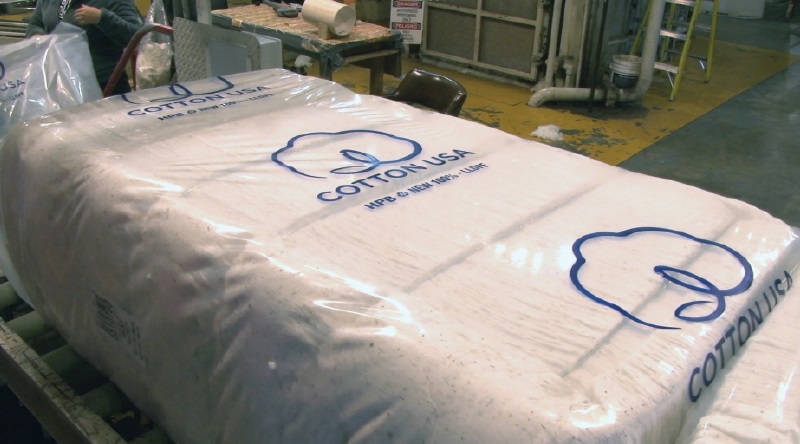Out of the Doldrums
You could feel the optimism beginning to build for U.S. cotton at this year’s Beltwide Cotton Conferences in January in New Orleans.
It was there that Cotton Grower’s annual survey of cotton producers was released, projecting that 9.912 million acres would be planted this spring, up 11% over USDA’s final planted acreage report of 9.1 million in 2009. We felt, and said, the number was too low.
It was there, too, where an interactive poll of cotton consultants conducted by Dr. Dan Reynolds of Mississippi State University’s Department of Plant and Soil Sciences, showed that 42% of the consultants believed cotton acreage would be up at least 10% in their areas this spring. Another 22% of them said it could be up as much as 20%.
Each successive survey since then has shown even more optimism and more acreage. Was it a tidal wave building strength? For sure cotton is on the rise.
In early February, the National Cotton Council’s projection was 10.1 million acres.
At the Mid-South Farm & Gin Show in Memphis in late February, Allenberg Cotton Co. CEO Joe Nicosia said during the cotton market update session that if the U.S. did plant 10.1 million acres, look for $1 cotton. Allenberg’s call was for 10.4 to 10.5 million acres.
Then other analysts began to talk in terms of 10.5 million acres. And USDA projected just that on March 31, an increase of 15% over last year. USDA said Upland acreage is expected to total 10.3 million acres, while Pima acreage is expected to reach 190,000.
Obviously, price is behind the wave of momentum. At planting last year, the ICE December 2009 futures contract was less than 50 cents per pound, and December 2010 has been over 76 cents.
Texas will increase plantings by 600,000 acres this year for a total of 5.6 million, up 12% over last year’s 5 million. This would be the most cotton acreage in Texas since 2006’s 6.4 million.
The biggest percentage increases will come in South Carolina (up 52%), North Carolina (up 44%) and California (up 39%).
Louisiana will again reduce acreage, falling from what was an historic low of 230,000 acres in 2009, to a new low of 200,000 this year, down 13%. To put it into perspective, Oklahoma will have 40,000 more acres of cotton than Louisiana this year. The last time Louisiana had over a million acres was in 1995 with 1.085 million ― 705,000 more than Oklahoma.
Mississippi and Georgia have had a traditional battle for second place in total acreage behind Texas. Between 1995 and 2006, Georgia’s acreage ranged from a high of 1.5 million to a low of 1.29 million. Between 1995 and 2001, Mississippi’s ranged from a high of 1.62 million to a low of 950,000. From 2006 to 2007, Mississippi’s acreage dropped by almost half, falling from 1.23 million to 660,000. Acreage dropped by more than half from 2007 to 2009 ending at 305,000. This year, Georgia will have over triple what Mississippi has.
But Mississippi and Louisiana growers have had the flexibility to take better advantage of the food-for-fuel driven explosion in grain prices that began in 2008.
Other Mid-South states will show increased to flat acreage in 2010: Arkansas is expected to stay even at 520,000 acres, Mississippi will increase acreage from 305,000 to 340,000; Tennessee will plant 380,000, up from 300,000, and Missouri will go from 272,000 to 290,000.
As an area, the Southeast will see a significant increase in cotton acreage. Alabama will increase acreage from 255,000 acres to 360,000, Georgia from 1 million to 1.15 million, North Carolina from 375,000 to 540,000, South Carolina from 115,000 to 175,000, Virginia from 64,000 to 75,000, and Florida from 82,000 to 90,000. In the Far West, California will again lead in both Upland and Pima acreage, with growers expected to plant 100,000 acres of Upland and 165,000 in Pima for a total of 265,000, up from 190,000 in 2009.
As the wave of optimism continues to grow, analysts are now saying the U.S. could plant a minimum of 10.6 million acres this year, with 10.8 million a possibility. Others aren’t ruling out 11 million acres.
Global cotton acreage is projected at 80.5 million by the International Cotton Advisory Committee, an increase of 8%.
Everything associated with the rising tide of cotton’s fortunes is demand driven, and USDA said in its April 12 report that global cotton consumption is estimated to rebound by nearly 6% from 2008/09. Mill use decreased last year by 10%, which ties the historic percentage drop, impacted overwhelmingly by the global economic crisis. You have to go back to 1937/38 to find another 10% decline in consumption. An improving world economy will drive cotton consumption, and in 2009/10 consumption is projected to reach slightly over 116 million bales, 6.3 million bales over last season.
China will account for over 40% of global cotton consumption in 2009/10. As the world’s leading cotton importer, China is expected to import 9.5 million bales this year, up 36% from a year ago.
But U.S. cotton demand in 2009/10 is projected to reach its lowest level since 1998/99. U.S. mill use is currently estimated at 3.5 million bales for the year, down 100,000 bales from 2008/09. The decrease in domestic consumption makes U.S. exports even more important. The U.S. is the largest exporter of cotton in the world, and exports dropped from 13.3 million bales in 2008/09 to 11.8 million in 2009/10. But exports are projected to rebound by the end of the 2010/11 marketing year to 12.5 million bales.
Despite the drop in exports, reduced acreage and production are reducing cotton stocks significantly. U.S. carryover has fallen from 6.2 million bales in 2007/08 to only 3 million now.
The same is true for world production and carryover. Although world production has risen from 102.7 million bales in 2009/10 to a projected 117.2 million this year, it won’t cover an Allenberg Cotton Co. projected demand of 119.8 million. As a result, world carryover will drop from 60 million bales in 2007/08, to 49.4 million this year, using Allenberg’s numbers.
With stocks this tight, Allenberg CEO Joe Nicosia said, “There is no cushion if something goes wrong. The world cannot stand a crop failure.”








